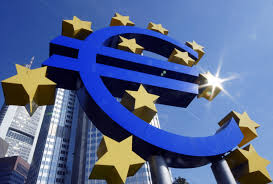This year will be marked by positive macroeconomic developments, with a solid GDP growth and continued low interest rates. However, the fundamental reform challenges will continue to exist for a longer period of time, with the faster growth of productivity and thus better living standard depending on these reforms. The case of Agrokor certainly did not bring Croatia down to its knees, as some critics claimed, nor are there big concerns that something like this will happen in the future – says Boris Vujčić, the Governor of the Croatian National Bank (CNB). But there are other reasons that the public and, above all, the public policy stakeholders have to pay attention to if they want the current positive trends to be sustainable over a longer period of time. The announced preparations for the introduction of the euro will certainly not lead to instability in economic developments, but can only help Croatia to be even more appealing to both investors and tourists – – Govenror Vujčić says for Diplomacy & Commerce.

Photo: Anto Magzan/PIXSELL
-
How would your rate the current macroeconomic situation in Croatia?
According to the CNB’s estimates, the last year’s dynamics of real GDP growth was similar to that of 2016, with a widespread growth again. Domestic demand has increased, and the Agrokor crisis, as we expected, has had a limited impact, which has resulted in reduced investments. The growth in goods and service export continued to contribute the most to the overall economic growth, along with the continued dynamic increase in export of goods, as did the record tourist season, which was reflected in the high year-on-year increase in export of services in the first nine months of last year.
In the beginning of 2018, consumer confidence continued to grow, and this was clearly influenced by favourable trends in the labour market, i.e. the continuation of the employment growth trend which began in mid-2014, along with the simultaneous decrease in the unemployment rate. In addition to the employment growth, there was a relatively strong growth in gross and net wages.
Increase in consumer prices remains to be minimal which is not only true for Croatia, but for most EU countries. The average annual consumer price inflation rate was slightly above 1% last year, with the food prices contributing the most to the overall average inflation. Last year there was also a noticeable surplus of the current and capital account, while the foreign indebtedness indicators improved.
The state of public finances is also considerably more favourable. According to the Finance Minister, a surplus in the government budget balance was recorded last year, which means that a significant fiscal adjustment was accomplished on an annual basis. Such developements are positively reflected in the government debt dynamics, which share in the national GDP was also noticeably reduced.
Despite the positive economic trends, we should point out that there are still significant vulnerabilities and structural problems noticeable in the Croatian economy. Although the overall government debt and external debt continued to fall last year, they still remain high, which poses a significant risk to the economy in the event of macroeconomic shocks. Reduced unemployment rate is partly a reflection of the emigration of mostly younger workforce, which is certainly not good as it adversely affects the already low potential growth in the mid- and long–term. Substantial structural changes have to be carried out in order to boost the growth.
2. You announced a lower economic growth in 2018 relative to 2017. On what basis did you make such estimates and what are your proposals to overcome it?
In 2018, we expect the continuation of real GDP growth, although economic growth could be slightly lower compared to 2017. A slight slowdown is a refledtion of the expectations of a slower growth in goods and service export, primarily due to the expected slowdown in the growth of export of travel services after several years of an exceptionally strong increase. However, exports, or foreign demand for our goods and services, will continue to contribute significantly to the overall economic growth in 2018. In terms of domestic demand in 2018, we expect a slight decline in personal spending is due to the loss of the beneficial effects of tax changes and the consequent decline in the growth of real net wages, as well as due to a somewhat lower employment growth. Household consumption could still have the biggest contribution to GDP growth. At the same time, we expect a more robust growth of gross investments in fixed capital formation due to a more pronounced utilization of EU funds owing to which the contribution of capital investments in economic growth could come close to the contribution of personal consumption.
The mid-term projections also point to a trend of decreasing economic activity growth, whereby productivity growth will be the key to boosting growth rate. Namely, demographic trends in Croatia are very unfavourable, and in the mid-term, labour factors are expected to have a negative contribution to GDP growth. We also expect a positive contribution of investments to be lower compared to the pre-crisis period which was marked by infrastructure expansion. Increasing labour productivity is possible only with internal reorganization and cost-cutting, continuous training of employees and the improvement of the existing and the use of new technologies. In this context, we also need a predictable legislative and institutional framework, the elimination of various obstacles to doing business, greater investments and a more advanced education system. Without this, it will be difficult to realize the inclusive, economic, social and ecologically sustainable growth in Croatia, and to reduce the difference between domestic and European income. In short, structural reforms are needed.

3. You have also pointed to the problem of availability of experts or rather to theh problem with the quality of the workforce. What are mechanisms can the CNB use to assist the Croatian Government in overcoming these issues, and what is the solution of this problem?
The lack of adequate workforce is beginning to pose an ever greater problem for businesses in Croatia, which could turn into a significant limiting factor for stronger economic activity growth in the future. Namely, according to the Survey on Small and Medium Enterprises Access to Financing, which the CNB conducted for the second consecutive time in late 2017, Croatian businesses people cited unfavourable regulatory environment as one of the main limiting factors in doing business, in addition to the availability of experts.
The difficulties with finding quality workers can partly be due to a significant outflow of working-age population, which intensified after Croatia joined the EU. Economics literature suggests that the decision on mobility is primarily influenced by economic factors, so it is not unusual that the long-lasting recession in Croatia and the opening up of the labour market in othe, economically more developed Member States led to a strong population decrease. Therefore, all measures aimed at boosting economic growth in Croatia and strengthening convergence in real incomes between Croatia and the developed EU countries also have a positive effect on the reduction of population emigration.
Since 2008, or rather after the onset of the recession in Croatia and the problems in international financial market, the Croatian National Bank has been continuosly implementing a series of measures to mitigate the adverse effects of the global crisis on the Croatian economy and reverse the negative economic trends. The results of the aforementioned Survey on Access to Financing confirm that the efforts and measures carried out by the CNB have had an effect, i.e. that access to finance is currently the least of the business-related problems of small and medium enterprises.
However, the Croatian National Bank can not resolve the structural problems of the economy, and the lack of adequate workforce is partly one of those problems. Employers find it difficult to find workers despite the fact that the unemployment rate is still in double digits and that Croatia still has one of the lowest participation rates in the EU. This suggests that there is a significant number of workers with inadequate skills, that is, their knowledge does not meet the needs of employers. The measures that can resolve this problem go beyond the scope of monetary policy. They are primarily related to the strengthening of active labour market policies and more so to the better alignment of educational, vocational and university curricula with the real needs of the labour market.
4. The profit generated by the banking sector in 2017 was 50% lower than in 2016. Based on the data available to the CNB, what trends are foreseen for 2018 in terms of the banking sector and the entire financial system?
The operational results of the banking sector improved slightly in 2017 compared to the previous year. However, this is not reflected in profits for two reasons: the first is the sale of VISA shares, a one-time positive event in 2016, which was carried out by virtually all major Croatian banks that in the process of restructuring VISA. On the other hand, Agrokor’s insolvency was a major negative event in 2017. As the banks’ response to this development was good in a way that they made major value adjustments on Agrokor’s placements, this had a significant impact on the results. These two events combined created an illusion of the great volatility of the banking system’s profitability. However, this impression, in fact, has no basis in the operational result of banks.
This year, we expect the banks to be profitable, further improving their operating results. It is possible that more adjustments will be required in order to finalize the process in Agrokor, but we think that the banks have accepted the majority of the adjustments.
Therefore, we can safely say that the Croatian banking system will remain profitable and well capitalized this year.

5. You have stated that the Government has sufficient professional capacity to continue working on the required reforms, regardless of the current situation in Agrokor. Do you think that worse is yet to come for Agrokor and what kind of developments can still jeopardize the country’s financial stability?
Following the adoption of the Law on Extraordinary Administration Procedure and Liquidity Insurance for Agrokor, the risks to financial stability resulting from the crisis spilling over to other companies have been considerably reduced. The option of a chaotic restructuring is now perceived as a less probable event. However, the conducted resistance test shows that the domestic banking system would be able to withstand such shock, even if it is combined with the slowdown in economic growth and rising financing costs. The financial system‘s resistance is largely due to the great effort invested by the CNB in keeping the exposure of the banking system to Agrokor within the legal framework.
6. In addition to current activities, the introduction of the euro is certainly the biggest and most serious task awaiting Croatia. The preparations for this have already started. When do you expect Croatia to make the first step in the exchange rate mechanism and how much is the entire process of introducing the euro going last? What criteria does Croatia have to meet?
The key prerequisite for making the first step – i.e. entering the exchange rate mechanism – is to continue with the steady implementation of fiscal consolidation and accelerating reform efforts to boost potential growth. Such policy will contribute to the further reduction of macroeconomic imbalances, will increase economic resistance to possible future shocks, and thus persuade European member states and European institutions that we are ready for the initial step on road towards introducing the euro as our official currency. I believe that we can become serious candidate for entering the exchange rate mechanism in two to three year, assuming that the current trend of decreasing macroeconomic imbalances, including public debt, continues.
After we start participating in the exchange rate mechanism, we will have to meet the four criteria for introduction of the euro during our participation in the exchange rate mechanism for at least two years. These are low inflation, sustainable public finances, stable exchange rate and relatively low interest rates. These criteria are de facto already fulfilled, so I personally believe that we will meet all the prerequisites and do everything we can to shorten the time spent in the exchange rate mechanism at the required minimum, as well as to enjoy in all the benefits of the eurozone membership as soon as possible.
7. You have also said that, when the time is right, you are going to display the prices both in kunas and euros to prevent the rounding off of prices to a higher figure. Do you fear, with the introduction of the euro, product prices could go up?
I am convinced that the fear of a significant increase in product prices in shops is not justified at all because the prices in the Croatian retail facilities are already quite comparable with those in the European Union. The positive experiences of Member States that have already introduced the euro suggest that dual pricing in the national currency and the euro is an important element that contributes to preventing unjustified price increases due to rounding off that happens when one currency is replaced with other. This practice certainly contributed to the fact that the estimated impact of the euro introduction on the inflation in the new member states that introduced the euro was very mild and temporary, and it averaged at 0.23 percentage points. A similar effect on the prices is expected in Croatia after the introduction of the euro.
8. What do businesses stand to gain and lose from the introduction of the euro compared to the current situation?
In the countries like Croatia, the introduction of the euro usually results in lower macroeconomic risks and higher efficiency and competitiveness.
By switching to the euro, the risk associated with the fluctuation of the euro / national currency exchange rate disappears. This in practice means that, after the introduction of the euro, the debtors, which have euro-denominated liabilities, will no longer be sensitive to foreign exchange fluctuations because they will generate their income in the predominant currency of their liabilities. Companies that operate internationally will also have it easier because the uncertainty about the impact of the euro exchange rate on the relative prices of import and export products, as well as the costs of currency exchange and currency risk instruments, will disappear. In addition, membership in the eurozone makes the country more credible in international financial markets, which can ensure a more favourable access to foreign capital. This credibility is especially important in times of financial crisis when international investors are reluctant to take a risk. As a tourist country, Croatia will certainly benefit from the fact that guests from the eurozone will be able to pay for their holiday expenses in their own currency, which could further increase the country’s competitiveness in the European tourism market.
With the introduction of the euro, small, open-end and highly euroized countries like Croatia will not lose much. Actually, the space for conducting autonomous monetary policy in such countries is very narrow, and by transferring the authority to manage the monetary policy to the European Central Bank, the incurred costs on these countries are not really high. Furthermore, the fear of a sudden hike in prices and a drop in living standard has proved unfounded. Yet, viewed at a micro level, it is certain that some subjects will be harmed by the introduction of the euro. This applies primarily to companies relying on earnings generated by currency exchange operations, namely exchange offices and banks. We should also underline that banks will be able to reduce the loss caused by the loss of revenue from currency exchange operations by significantly reducing the cost of regulation.

9. What is your message to decision makers and companies? What kind of year they can expect from 2018, and what do you, as the Governor of the Croatian National Bank, see as the biggest challenge?
This year will be marked by similar trends as those in 2017, i.e. positive macroeconomic developments, with a solid GDP growth, continued fiscal consolidation, decline in public debt and a considerable surplus in current and capital account balances. In the monetary sphere, this will mean further appreciation pressures on the domestic currency that the CNB will continue to fight against. The interest rates will remain low. However, we are nearing the end of extremely low interest rate policy, namely the normalization of monetary policy is already knocking on our door. The FED has already started it.
The fundamental challenge lies in the segment of structural policies, which I have been talking about for a long time, namely improving business and investment climate and increasing efficiency of the public and the business sector. This is a core prerequisite for faster growth of productivity and thus of higher living standard.